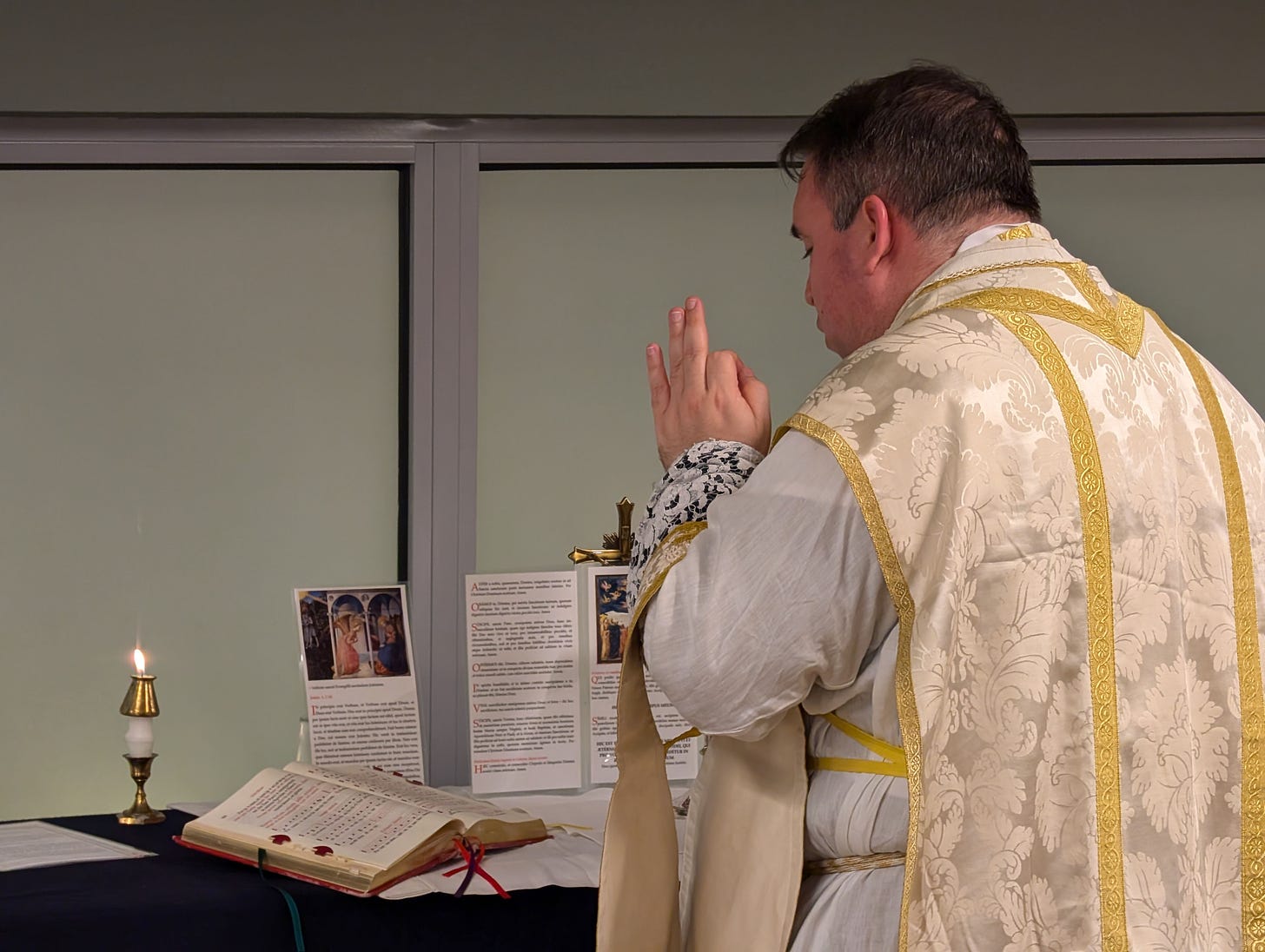In the Footsteps of St. Paul (Part 2)
Mass of the Angels in Thessaloniki, Musical Interlude, First Preaching & Baptism in Europe, “Cacophony of Confessions,” Incredible Iconography, & more
In the first part of this travelogue, posted a week ago, I discussed my first of several encounters with the Greek liturgy in Greece, our Mass in the Corinthian agora, the visit to the Acropolis and the Areopagus, the ruins of Delphi, the mystical mountain monasteries of Meteora, and the bema upon which St. Paul preached to the Beroeans.
Just a reminder: If you are receiving this post by email, clicking on the article’s title will bring you to my Substack page, where you can then click on any photo (including galleries) to enlarge it.
Day 5 (cont’d): Thessaloniki
On the eve of our arrival in this second most populous city of Greece, our group enjoyed the blessing of a sung Holy Mass in Thessaloniki’s Immaculate Conception Cathedral. As it was a feria, Father chose to offer a Votive Mass of the Holy Angels (hence our choice of the Missa de Angelis). Here you can get a little taste of the lovely acoustic in the church:
Yes, the church was a bit plain after the Greek monasteries, but it was a huge relief just to be in a church for Mass, as most of the time we had to make do with all-purpose rooms at hotels or on ship. In a way all its own, the TLM and the chant still took possession of those secular spaces and, for an hour, converted them into portals to eternity.

A Musical Interlude
At two moments on the trip, I saw fascinating examples of ancient musical notation.
The first, in the museum at Delphi, is found on blocks from the southern outer wall of the Athenian treasury, which were incised with musical inscriptions — hymns to Apollo, composed by Athenaios and Limenios — considered the oldest written notation of a melody, ca. 128 BC. Between the verses, in the Ionic alphabet, notes have been inscribed for the choir and instrumentalists. The music for the cithara, lyre, and flute is written in a combination of characters and punctuation:


The second example was in the museum of the monastery of St. Stephanos. Here is an 18th-century Byzantine manuscript with the chant notated in neumes, which can be compared in the West to the neumes found in such manuscripts as St. Gall and Laon:

As far as I know, there is nothing in the East like the “square-note” notation that became common in the West in the late Middle Ages, and this is probably due to the fact that Western melodies tend to be much more complex (just look at a typical Gradual antiphon from the Mass), while in the East, well-known basic melodies are, in performance, heavily ornamented by cantors who have the know-how. In other words, the Eastern practice has remained more of an oral tradition, whereas in the West, the increasing complexity of the music demanded the invention of music scores as we think of them today.
(If any reader would like to correct me or offer further nuance, please leave a comment.)
Day 6: Thessaloniki, Krinides, Philippi, Kavala
Keep reading with a 7-day free trial
Subscribe to Tradition and Sanity to keep reading this post and get 7 days of free access to the full post archives.






